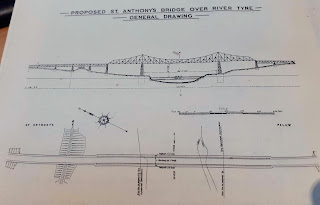Fragments of the Town's Past ... and of the North-East, too - with all profits from the sale of my books being donated to the Great North Children's Hospital.
Thursday 28 September 2023
More Post-WWII Plans for Newcastle
Friday 22 September 2023
John Buddle: "The King of the Coal Trade"
Saturday 16 September 2023
Appeal for Articles, Recommendations, etc.!
- An article on the history of Newcastle or the North-East of England. Something that has not been covered before on the blog, of course; and perhaps around the 500-word mark (but longer or shorter is fine, too);
- A plug for a local history book you may have written;
- A review of a local history book you have read, or can recommend;
- Any other recommendations, such as useful websites, articles, links, etc.;
- Publicity for a forthcoming talk you may are giving, or may know about (and that it relevant to the history of the region);
- Publicity for your local history society, and/or their forthcoming activities;
- Are there any upcoming or current projects that you know of that may be of interest to my readers?;
- Perhaps you need to put out an appeal for information on some topic?
- Do you have an 'opinion piece' that you think deserves an airing?
Wednesday 6 September 2023
The Haymarket: A Brief History
The Haymarket area of Newcastle, which is now dominated by the bus station of the same name, was once an area dedicated to the selling of fodder and other farm produce (now there’s a surprise). It was not always so, though.
In times of yore, it was well outside the old town walls, of course, and therefore lay undeveloped until relatively modern times. As Percy Street and Northumberland Street developed, the future Haymarket area was one of the last spots in the vicinity to receive attention. It was described as an area of “dirty, unseemly waste, full of puddles and pools of putrid water.” In 1808, however, it was paved and turned into a parade ground for local soldiery. Then, in 1824, a Hay Market was established there, held every Tuesday. “High-piled carts of hay and the groups of horses and buyers and sellers, formed a fine picture, with the background of picturesque dormer-windowed old houses on the west side of the street.” Here, too, would be the gathering point for “wild beast shows” and exhibitions of “wax-works, fat women and living skeletons.” Hiring for farmers’ servants was held there from 1838, turning the area into a great gathering point for country folk – no wonder, then, that the public house which once dominated the area was called The Farmer’s Rest. Hay, straw and the likes continued to be sold there until the early years of the twentieth century … and eventually the market passed into history, with the bus station opening in 1930.
[quotes taken from Charleton’s Newcastle Town of 1885]
[article taken from Newcastle-upon-Tyne: Fragments of the Past, Vol.2 - see left-hand column]





